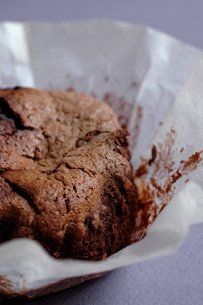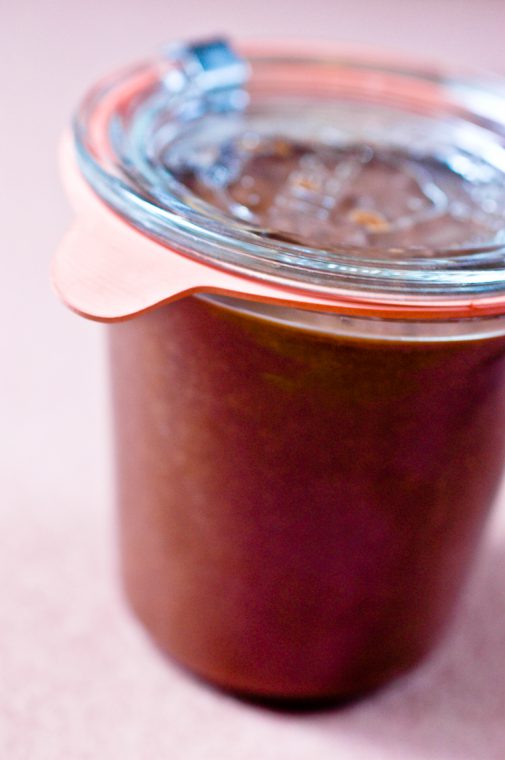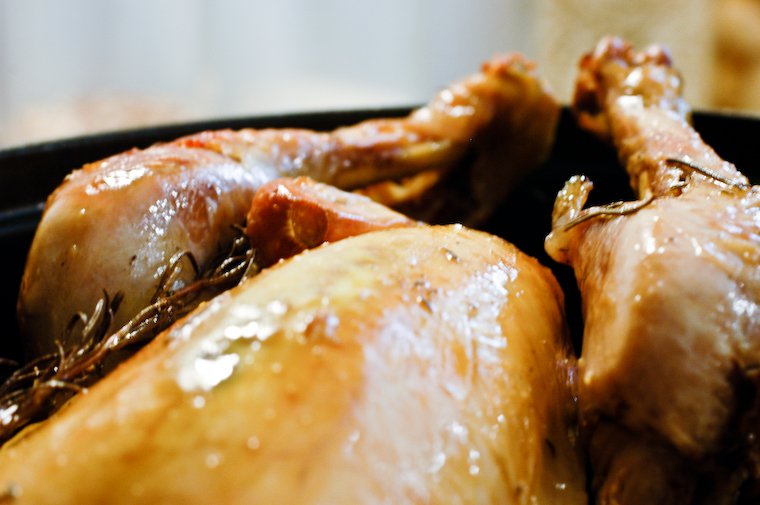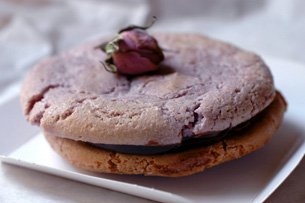
[Coconut Chocolate Cake]
I have known Marie-Laure for nineteen years. This represents more than two thirds of our lives, and our friendship has accompanied us through primary school, junior high, high school, university, a year in Brazil for her, two years in California for me, and a variety of jobs, relationships, and haircuts, without us ever growing apart.
She lived a few doors down from me (or perhaps I lived a few doors down from her, the question is up for debate) for more than a decade, before we flew out of our respective nests. And now, after a few years of living in different countries and then all the way across town from one another, Marie-Laure and I are finally reunited: she has just moved into an apartment a short walk up and down the Montmartre hill from mine, and this makes us very happy.
She threw a housewarming party last Saturday — a pendaison de crémaillère as we say in French, see here for an explanation — and I offered to bring a chocolate cake, which I’m sure you’ll agree is the most efficient way to warm up a house. I decided to build upon Christophe Felder‘s Gâteau Belle-Vue, a butterless (though by no means fat-free) chocolate cake recipe that can be found in one of the pastry chef’s many books and on countless French food blogs — I myself first saw it on Sylvie‘s.
For some reason I wanted to make a coconut version of this cake and while I was at it, I made several other adjustments: I upped the amount of chocolate (I have a reputation to maintain), omitted the almond powder and replaced it with a higher amount of grated coconut, omitted the flour (which makes the cake gluten-free if you make sure your chocolate is, too), used light whipping cream only instead of cream and milk, and added a bit of salt because salt makes everything taste better, especially baked goods.
I loved this cake and, judging by its disappearance ratio (number of slices eaten divided by number of minutes on the buffet table), I wasn’t the only one. The top develops a thin crust while the middle remains lusciously moist (but not so dense that it sticks to your front teeth and creates embarrassing situations), and red Bounty bar fans don’t need me to sing the glories of the bittersweet chocolate and toasted coconut combo. Although no one got a chance to verify it this time, I believe the cake would taste even better the next day: what you would lose in fresh-from-the-oven top crust effect would be regained by the overnight deepening of flavors.








